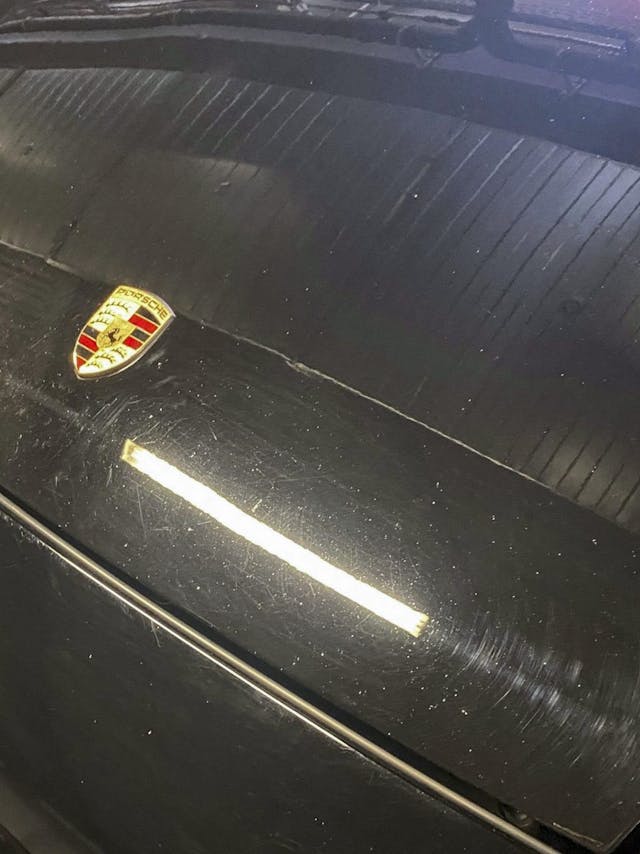Evaluating a car online
We just wrapped our fourth Hagerty Price Guide update since the pandemic began, and in those four updates we had to make some adjustments. In normal times, we evaluate hundreds of vehicles at in-person auctions, but for most of 2020 and so far in 2021 we had to rely much more on online listings. In other words, we were pretty much like all the classic car shoppers who suddenly had to get used to evaluating pixels instead of the real thing. One key difference: we do this all day, every day.
With each price guide update during the pandemic, we’ve looked at thousands of online auction cars as well as classified listings in addition to our other data sources. Although there’s no substitute for putting your own eyeballs on a potential purchase, we have some tips for evaluating a car online that you mind find useful in the hunt for your next classic.
Do your research
This should go without saying, but if you’re interested in buying a car you should learn as much about it as possible long before you start clicking on photos. Being well informed and having a trained eye is of course key to purchasing any car but becomes essential when all you have to go on is photos.
Learn the car’s major service intervals and any potential mechanical gotchas. If they haven’t been performed or addressed, you can use that as a negotiating tool with the seller.
Learn the market for the car. Know what options, years, or even colors command a premium price. This will help you set a realistic budget and can help you spot any potential bargains.
Consult someone
The price guide has always relied on trusted industry insiders, but since the pandemic began, we’ve relied on them more than ever. That’s not a bad idea if you’re shopping, either. It’s never a bad idea to send a knowledgeable friend the link to the car you’re about to bid on or even to hire an expert to evaluate a potential purchase. In addition to cooling your gotta-have-it fever (hey, we’ve all been there), they might spot something you missed.
Go right to the details
A halfway decent camera and good lighting can make all but the rattiest cars appear fantastic on a computer screen. A front 3/4 photo is nice to look at, sure, but it doesn’t actually tell you anything meaningful about a car’s condition. So save yourself some time and scroll right past the glamour shots. Look carefully at the close-ups instead, because that’s where the information is. The most reliable auction sites will provide ample closeups, including of flaws, but these pictures are often buried under the glamour shots—they are trying to sell the thing, after all.

It’s generally hard to judge paint quality with anything but the naked eye, but up close shots might show swirls, scratches, or chips. Pitting shown on a badge or bumper in one photo might clue you in to how the rest of the brightwork looks. Faded gauges or worn seat upholstery might clue you in to how the rest of the interior looks. Look closely at engine bay and underbody photos, and do your research to make sure that the parts you’re looking at aren’t just clean but also correct.
Look at the tires. If a seller boasts a fresh restoration but fitted cheap off-brand tires, that should have you wondering what other corners they cut in the harder-to-see areas of the car. It’s also safe to assume that if you spot some flaws in a photo gallery, there are more flaws that you can’t see.
Another detail worth noting: On a classified listing, check the date it was posted. If a car was listed eight months ago and is still for sale, there may be something wrong with it or the seller might be inflexible and asking too much money.
Watch out for what’s missing
Is there something conspicuously absent from a listing? That should be cause for concern. A gallery of 300 photos is great, but if they’re all from 30 feet away then they’re useless. Lack of underbody photos, engine bay shots, or interior views is a definite red flag. If a convertible doesn’t show any shots of the soft top, you should be suspicious.

For many classic cars, documentation that can prove a matching-numbers drivetrain or track an ownership history is important, and a lack of that documentation is another red flag. Is the seller claiming a restoration work or service was performed? Look for the receipts. Things like original owner’s manuals or tool kits can also cost thousands to replace, and if they aren’t shown or listed you can probably assume they aren’t there. Ask the seller to clarify.
Communicate with the seller
Be it in a comment section, a private message or a good-old-fashioned phone call, pay attention to what the seller says and how they answer questions. Be wary of vague answers, and ask them to take extra photos for you if you want to see something more closely.
We’ve all read “I know what I have” in a listing, but even just a quick conversation with the seller can clue you in to just how knowledgeable they are.
CARFAX isn’t perfect
For more modern collector cars, a CARFAX or AutoCheck can be a great tool for clarifying a vehicle’s history, especially when you aren’t able to inspect a car in person. But neither one is gospel. Not every incident gets reported to CARFAX/AutoCheck, and there can be lag time between when an incident actually occurs and when one of those online tools records it. Insisting on a vehicle history report is always a good idea, but take it with a grain of salt.
Another good habit is to just pop the car’s VIN into Google. This simple step can reveal all sorts of information, including additional pictures, online discussions or forum posts, or previous auction listings.
If it seems too good to be true, it probably is
A seemingly great car with a low asking price is always tempting, but don’t let the potential of a great bargain keep you from practicing good judgment.


